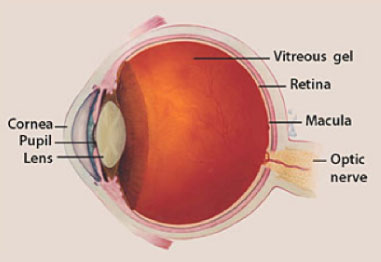Glaucoma
What is Glaucoma?Glaucoma is a group of diseases that damage the eye's optic nerve and can result in vision loss and blindness. However, with early detection and treatment, you can often protect your eyes against serious vision loss. Glaucoma Types and SymptomsHow does glaucoma develop?At first, open-angle glaucoma has no symptoms. It causes no pain. Vision stays normal. Glaucoma can develop in one or both eyes. In angle-closure glaucoma, the fluid at the front of the eye cannot drain through the angle and leave the eye. The angle gets blocked by part of the iris. People with this type of glaucoma may have a sudden increase in eye pressure. Symptoms include severe pain and nausea, as well as redness of the eye and blurred vision. Without treatment to restore the flow of fluid, the eye can become blind. Other types of glaucoma includes: congenital glaucoma, secondary glaucoma and pigmentary glaucoma. Without treatment, people with glaucoma will slowly lose their peripheral (side) vision. As glaucoma remains untreated, people may miss objects to the side and out of the corner of their eye. They seem to be looking through a tunnel. Over time, straight-ahead (central) vision may decrease until no vision remains. How is glaucoma detected?Glaucoma is detected through a comprehensive dilated eye exam that includes the following: Visual acuity test., Visual field test, Dilated eye exam, Tonometry Pachymetry. How is glaucoma detected?Glaucoma is detected through a comprehensive dilated eye exam that includes the following: Visual acuity test., Visual field test, Dilated eye exam, Tonometry Pachymetry. Glaucoma TreatmentsImmediate treatment for early-stage, open-angle glaucoma can delay progression of the disease. That's why early diagnosis is very important. Glaucoma treatments include medicines, laser trabeculoplasty, conventional surgery, or a combination of any of these. While these treatments may save remaining vision, they do not improve sight already lost from glaucoma. |

The optic nerve 
Normal Vision
|
Source: National Eye Institute (NEI)




